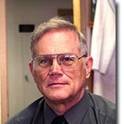| Present | Professor, University of Kentucky ‐ College of Medicine | |
|
|
||
Disciplines
Research Interests
Honors and Awards
- T. Cook Smith Lecture, Innominate Club, Louisville, KY, 10 May 2012
- Locus Grove talk, Louisville, 7 April l 2011
- Transylvania University Honoree at the National Philanthropy Day, 10 Nov. 2010
- Honorary Degree (Doctor of Humane Letters, honoris causa), Transylvania University, 23 May 2009
Links
Contact Information
University of Kentucky
College of Medicine
Department of Microbiology, Immunology and Molecular Genetics
MN457 Medical Science Building
Lexington, KY 40536-0298
(859) 233-6200
Email:
